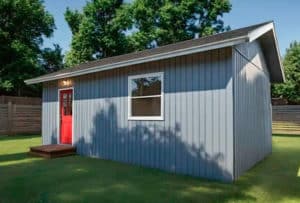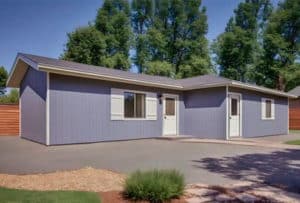





A link to download your FREE brochure will be in your inbox in 3 minutes



















The final price may vary based on project specifics.
To get a free accurate quote tailored to your needs, book a consultation with us today!

The price per square foot provided is an average and may vary depending on project-specific details such as materials, location, complexity, and other factors. Actual costs may differ from the average provided.
It is recommended to obtain a detailed quote based on the specific requirements of your project.

Please note that the monthly payment displayed on this page is an estimate and is subject to variation based on the selected loan product, applicants credit score, loan amount, and other financial details. Actual monthly payment may differ from the estimate provided.
It is recommended to seek advice from a financial advisor or loan officer to obtain precise payment information tailored to individual circumstances.
 Your Trusted
Local Contractor
Your Trusted
Local Contractor

Thinking about an accessory dwelling unit seated on your property near the primary dwelling? In this case, you’ve probably considered such challenges as several months or years of construction time and need to find adequate financing.
It’s possible to build accessory dwelling units from scratch or order prefab construction. Prefab ADUs are not only the most affordable housing options for you, your family, guests, or tenants. They’re also faster to build as the main work takes place at the factory, which allows them to avoid weather delays. Moreover, prefab ADU models strictly follow building codes and local ordinances, facilitating quick and easy acquisition of building permits.
Let’s delve into the process of creating modular accessory dwelling units to decide if this ADU project is for you!
If you wonder what type of prefab ASU suits your property the best, you may have a look at the following popular choices that fit both a single-family home and a multi-family home.
Prefab ADUs offer such options as:
Similarly to traditional accessory dwelling units, modular ADUs can stand alone from the primary dwelling units and feature independence in all aspects. Despite the same lot location, these secondary units have their own entrance and private utility connections (plumbing, heating, etc.), thus making their residents both structurally and essentially autonomous from other property occupants.
If your purpose is to expand the existing living space without building a separate structure, an attached modular ADU is your thing. This unit adjoins the main house, sharing utilities with it. To create an attached modular accessory dwelling unit, you can convert your attached garage or build a new modular structure on the side or back of the primary residence.
If adding a new construction sideways is impossible, what about the building above? For homeowners with limited space in their backyard, there are nice prefab ADUs on the second floor of your existing structure. If you have a garage, you can put a unit on top of it to both reserve its function and increase living space within your property.
In contrast to an attached or detached ADU, a tiny home is way smaller in size. If an ADU can sometimes reach as much as 1000 or 1200 sq. ft., a small home typically falls within a range from 100 to 400 sq. ft. However, even such compact, tiny homes may serve as a guest house or a source of passive income.
Indeed, the prefab ADU options offer less diversity than their traditional ADU counterparts. But it doesn’t mean you have only one floor plan or a single-style interior to choose from. In fact, when it comes to ADUs built off site, property owners can usually select a prefab ADU tailored to their specific site requirements, style and design preferences, or budget considerations.
Prefab accessory dwelling units come in versatile forms and layouts. Therefore, the specific choice depends on what fits your property the best.

Like any other accessory dwelling unit, a prefab ADU is a source of additional space specifically intended for living. It can harbor your close or extended family members if they have nowhere to live or just want to live closer to their loved ones (granny flats). More so, prefab accessory dwelling units may serve the goal of generating additional income or increasing property value.
But besides rental income and extra living area, prefab ADUs boast unique benefits intrinsic only to them:
Remember constant building work noises and tons of debris on your land in the course of your primary dwelling unit building? Modular homes provide you with an opportunity to avoid most of it!
Since prefab ADUs are units that ADU builders construct off-site and then transport to your plot, it may take as little as one day to install them. Of course, the installation time depends on construction complexity, but it’s not comparable to several months of traditional ADU construction.
When you build a conventional ADU, you may find yourself spending decent money on raw materials, design and construction engineering, labor, and grand permit fees. With prefab units, you also still need expenses for on-site prep and permits; the streamlined process contributes to reducing overall pricing. Also, prefab ADUs may be incredibly energy-efficient units, as many of them come with energy-efficiency features or other features for waste reduction.
If you want to buy an ADU built in accordance with the building code requirements in Sacramento, California, opting for a portable one may be quite beneficial. We attribute it to the fact that a prefab ADU undergoes a smooth and comprehensively verified building process in a controlled environment, minimizing the chances of something going wrong.
It’s usually easier to obtain a permit if the design you selected has already received approval from the local jurisdiction. That’s what happens with prefab units: you choose from the designs of ADUs that other homeowners have already successfully implemented.
To sum up, setting up a prefab ADU in your backyard brings forth a lot of positive outcomes, such as spending less, saving time on ADU construction, maintaining a clean site, and ensuring the highest quality and adherence to laws and regulations.
How does a modular ADU take its physical form? If this question interests you, we’re here to lift the veil of enigma. Putting it in simple words, you need to follow these steps: select a floor plan you like, undertake property assessment, engage in the permitting process, order, and install a modular home in your backyard.
Property owners will examine a catalog of possible ADU layouts and styles to pick what suits their preferences more. Modular homes range in size, layout, type of construction, customization options, and so on. While one ADU may boast a full bathroom, another one may offer its compact counterpart, focusing more on ample living room space. Whether it’s a compact studio, one bedroom plus one bathroom, or a two-bedroom ADU, modular ADUs come in lots of variations to cater to your needs.
Property owners may need property assessments for various reasons. Firstly, we have to learn everything about the condition of your land, its amenities, and existing structures to ensure project feasibility and create a site plan. Also, assessment involves checking if the proposed ADU will comply with local zoning laws and building requirements. Moreover, it allows us to estimate the following consequences: an addition of a new ADU affects property taxes and your land’s market value, which are essential parameters for you to consider when making up your mind on ADU construction.
Before obtaining a permit, your primary concern is understanding local zoning laws and city regulations governing ADU construction. After acquainting themselves with it, a homeowner simbits their site plan with the location of the modular ADU on it, floor plan, design plan, architectural drawings, engineering reports, and other documentation. Then, they wait for approval and schedule inspections for vital stages of construction.
After manufacturing prefabricated ADU modules at the factory, the building company transports them to your site. You need to make sure the site is ready for installation. For instance, check if the foundation of the prospective ADU is able to support the unit. Besides, you need to provide a clear access route to the place of construction, removing any obstacles for smooth unloading and maneuvering around. With the use of specialized equipment (cranes or others), the crew will align and connect walls and other parts of an ADU on the site. After placement, they also connect your ADU to plumbing and electrical connections, install an HVAC system, and add necessary exterior and interior finishes.
Modular ADUs differ in terms of construction methods. They are ADUs built off-site and transported to your land on heavy vehicles. Modular ADUs offer fewer customization options than traditional ADUs, but they also boast cheaper costs and quicker construction time than ordinary ADUs.
The cheaper options for ADUs are DIY ADUs and modular units. However, DIY ADUs come in disassembled form and require construction skills and lots of time and effort. On the other hand, even though slightly more expensive, modular ADUs remain quite an affordable housing option in addition to your primary dwelling.
The price of a prefab ADU house depends on various factors such as dimensions, design complexity, special amenities and features, finishes, and many more. Yet, the average price of a prefab ADU may fall within $80,000 to $100,000 without extensive customization options.
It’s not about being better; it’s about where your priorities lie. If you appreciate detailed ADU development with lots of unique amenities or extravagant design solutions, then a custom build suits you more. But if you’re complacent with a smaller choice of designs at the cost of cheapness and construction speed, prefab ADUs are right for you.
Get a First Look at Real ADU Projects